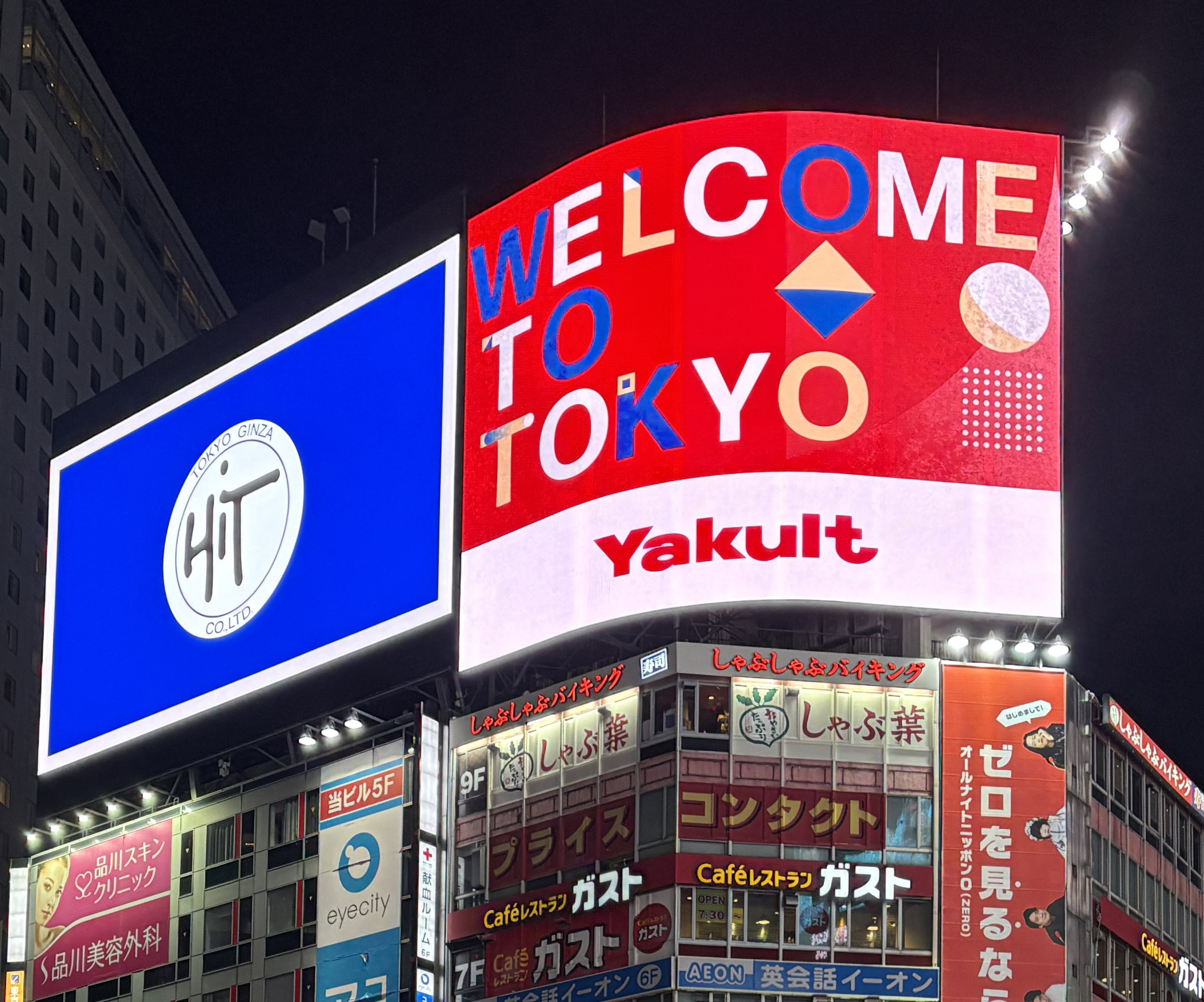Where to Stay in Tokyo: 9 Best Areas
If you’re wondering where to stay in Tokyo, the good news is that you’re asking the single most important question for planning your trip.
Tokyo is massive. I mean, sprawling, overwhelming, somehow futuristic and historic all at once. Choosing the right area to base yourself can significantly impact your experience.
This guide breaks down the 9 best areas to stay in Tokyo based on your travel style, vibe, budget, and convenience. I’ve also taken into account transport links and access to major attractions. No fluff, no vague advice. Just clear, practical info.
Each neighborhood comes with its unique flavor, and you’ll find a bullet list at the top highlighting the vibe, pros, and cons, as well as who it’s best suited for.
I’ll also suggest hotel options for every budget. Whether you’re a first-timer, returning visitor, solo traveler, or coming with kids, there’s a Tokyo base for you.
Shinjuku
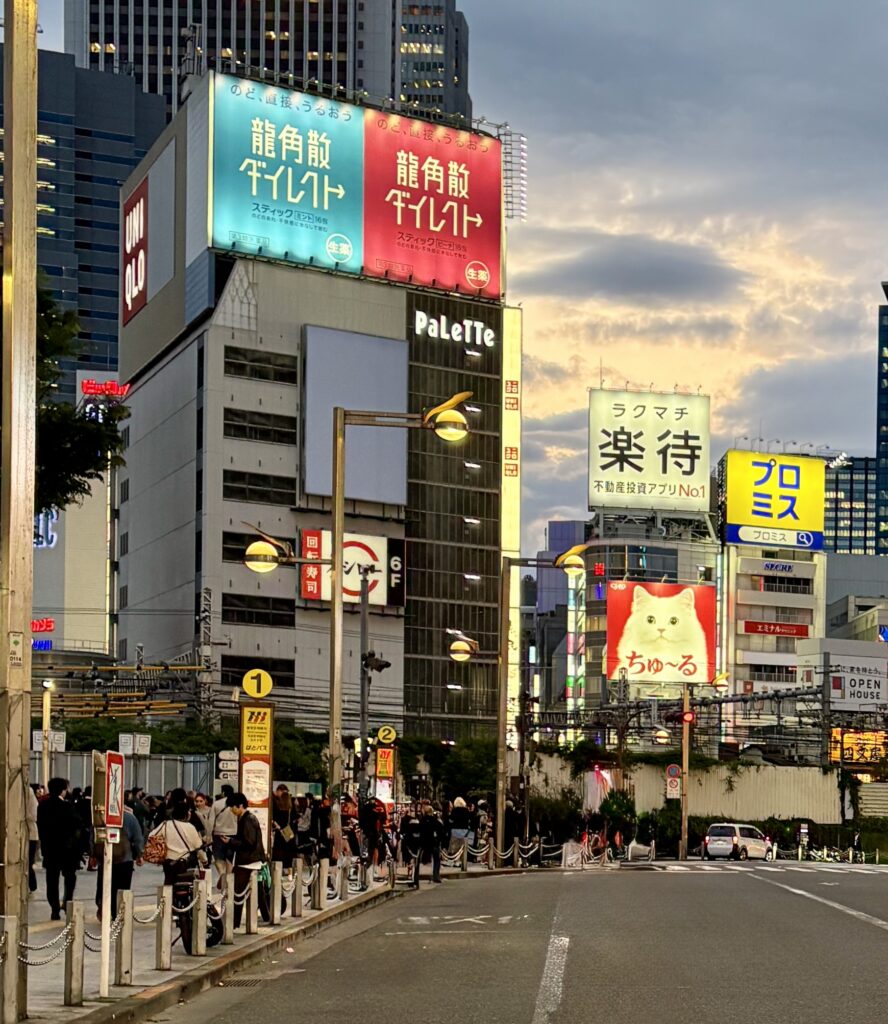
- Good for: First-timers, nightlife lovers, major transport connections
- Vibe: Bustling, neon-soaked, endlessly energetic
- Pros & Cons: Incredible transport + entertainment access; can feel chaotic or overwhelming
Shinjuku is Tokyo turned up to eleven. It’s a district that doesn’t sleep, always flashes, and pulses with energy well past midnight.
As Tokyo’s busiest hub, anchored by Shinjuku Station, the world’s most trafficked train terminal, it’s the city’s chaotic, convenient core, perfect for navigating both Tokyo and day trips beyond.
At ground level, Shinjuku is a neon canyon of contrasts. Want upscale shopping? Check out Isetan or Takashimaya.
Prefer it gritty and eclectic? Dive into Kabukicho or Omoide Yokocho, where smoky yakitori stalls and snug izakayas crowd the alleys. Kabukicho still has a red-light reputation, but these days, it’s more about nightlife and neon than anything else.
Shinjuku Gyoen National Garden offers a much-needed breather if you’re in the mood for quiet beauty, cherry blossoms, or a lazy afternoon picnic. It’s one of Tokyo’s largest and most beloved green spaces, featuring a blend of French, English, and Japanese garden landscapes.
Shinjuku’s food scene is stacked, with ramen joints, Michelin-starred sushi, conveyor belt spots, and themed cafés all delivering. Golden Gai is a nightlife staple, featuring tiny bars that range from jazz dens to horror hideouts. Some only fit six people, don’t be surprised.
For a cultural breather, hit the Tokyo Metropolitan Government Building’s free observation decks or stop by the Samurai Museum for a glimpse into Japan’s feudal past.
Accommodation-wise, you’re spoiled. Capsule hotels offer novelty, boutique stays bring style, and high-rises like the Park Hyatt pack cinematic appeal. Shinjuku is a go-to for those chasing energy, convenience, and variety.
Top Hotels in Shinjuku
Kimpton Shinjuku Tokyo – Luxury
Hotel Gracery Shinjuku – Mid-Range
Imano Tokyo Hostel – Budget
Shibuya
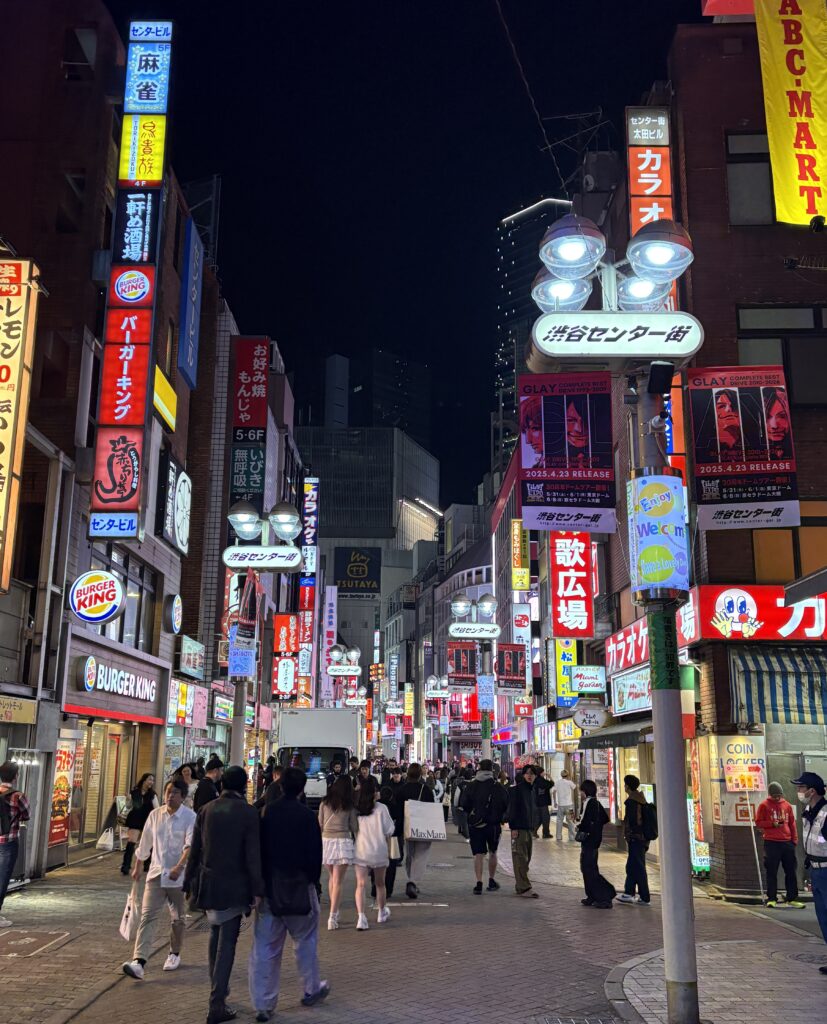
- Good for: Trendsetters, foodies, night owls
- Vibe: Hip, young, fast-paced
- Pros & Cons: Great food & nightlife; less traditional culture
Shibuya is where Tokyo turns up the style and energy. Famous for its bustling scramble crossing, the area is filled with fashion-forward locals, glowing billboards, and constant foot traffic. It’s youthful, loud, and unashamedly cool.
Yes, there’s the sensory overload of Center Gai and the iconic Shibuya 109, but take a side street and you’ll find quiet cafés, hidden shrines, or record shops steeped in subculture.
Food-wise, Shibuya delivers. From luxe sushi counters and yakitori joints to ramen bars and trendy vegan cafés, the variety is unmatched, drawing locals and travelers alike.
After dark, it morphs into a nightlife magnet. Bars, izakayas, and clubs come alive quickly, attracting a younger crowd of students, creatives, and expatriates. If nightlife’s your thing, Shibuya is hard to top.
Still, it’s not all neon. Nearby Yoyogi Park and Meiji Shrine offer peace, and you’re steps from Harajuku and Omotesando for even more exploration.
Shibuya’s accommodations are modern and stylish. You’ll find everything from high-tech capsule hotels to sleek mid-range stays and upscale towers with skyline views. Be prepared for smaller rooms and prices that reflect the neighborhood’s popularity.
It’s not the best fit if you’re looking for a traditional or peaceful Tokyo experience. But if you’re here for fashion, food, and nightlife, Shibuya delivers the city’s modern edge at full volume.
Top Hotels in Shibuya
Cerulean Tower Tokyu Hotel – Luxury
Shibuya Stream Excel Hotel Tokyu – Mid-Range
The Millennials Shibuya – Budget
Shinagawa
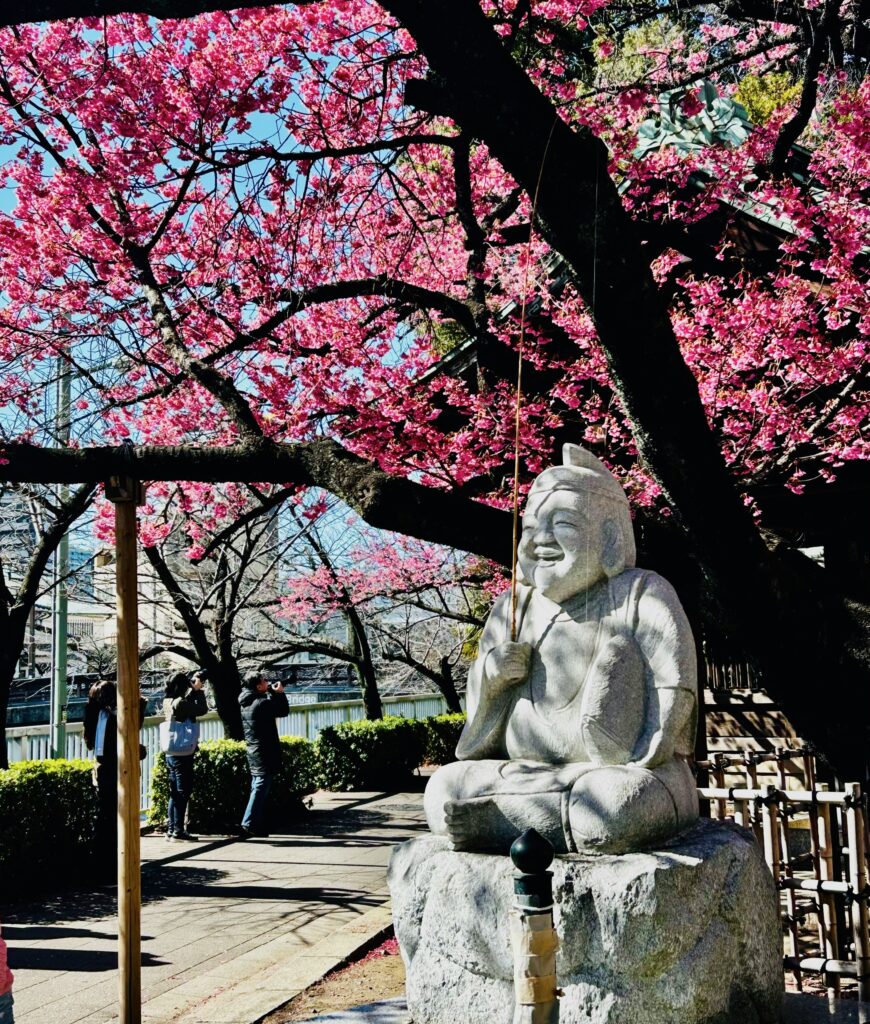
- Good for: Business travelers, day-trippers using the Shinkansen, quieter stays with excellent access
- Vibe: Professional, polished, efficient
- Pros & Cons: Bullet train hub + tranquil vibe; lacks the youthful energy of central Tokyo
Shinagawa often gets overlooked by first-timers, but seasoned travelers know it’s one of Tokyo’s smartest bases. It’s not flashy or Instagram-famous, but it’s clean, convenient, and far less hectic than Shibuya or Shinjuku.
With direct access to the Tokaido Shinkansen, Yamanote Line, and other major rail lines, it’s ideal for exploring both Tokyo and beyond.
The vibe here is more corporate than cultural, with sleek skyscrapers, business hotels, and modern convenience stores defining the landscape. But it’s not cold, there’s a welcome calm to the pace. Streets are quieter, crowds thinner, and it’s an easy area to recharge in after a packed day of sightseeing.
Shinagawa isn’t just a transport hub; there are cultural gems tucked away. Sengakuji Temple, a peaceful and historic site, is the final resting place of the 47 Ronin and offers a serene atmosphere for quiet reflection. Behind Shinagawa Station, cozy izakayas line the alleyways, glowing with lanterns and serving up sizzling plates.
Nearby Tennozu Isle adds creative flair with its galleries, waterfront dining, and budding arts scene, a refreshing contrast to Shinagawa’s more polished, corporate vibe and a glimpse into Tokyo’s modern, design-forward edge.
For travelers who prioritize peace, cleanliness, and seamless logistics, Shinagawa checks a lot of boxes. You won’t get the chaotic nightlife or quirky subcultures you’d find in places like Koenji or Shimokitazawa, but you will get a well-rounded, low-stress experience.
Top Hotels in Shinagawa
The Strings by InterContinental Tokyo – Luxury
Shinagawa Prince Hotel – Mid-Range
Sotetsu Fresa Inn Tokyo-Tamachi – Budget
Ginza
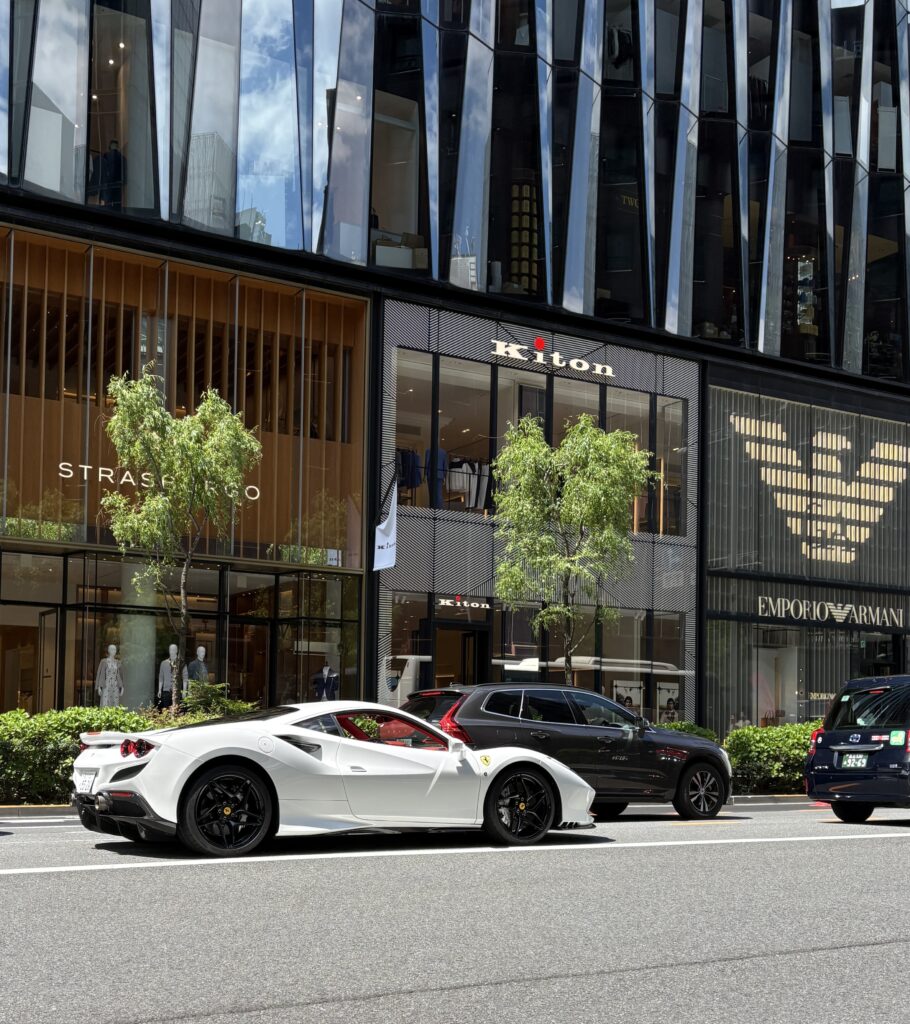
- Good for: Luxury shopping, upscale dining, polished atmosphere
- Vibe: Sleek, refined, metropolitan
- Pros & Cons: High-end boutiques and Michelin-starred restaurants; expensive and quieter nightlife
Ginza is Tokyo’s answer to Fifth Avenue or the Champs-Élysées. If you’re after sophistication, luxury, and cosmopolitan energy, this is your spot.
Immaculate boulevards are lined with designer stores, including Chanel, Louis Vuitton, and Dior, as well as upscale department stores such as Mitsukoshi and Ginza Six. Everything feels carefully curated, from the sleek storefronts to the artful window displays.
Dining in Ginza is refined and upscale. The area boasts a dense collection of Michelin-starred restaurants, from intimate sushi counters to elaborate French and kaiseki tasting spots. Even casual cafés feel indulgent, with elegant interiors and attentive service.
Despite its polished image, Ginza has a charm that extends beyond its luxury stores. Side streets reveal small galleries, craft shops, and hidden cocktail bars. On weekends, Chuo-dori turns pedestrian-only, offering a laid-back, open-air vibe that contrasts nicely with Tokyo’s more frenetic districts.
In terms of location, Ginza is superb. You’re walking distance to Tokyo Station and a short ride to Tsukiji Outer Market, Hibiya Park, and even Marunouchi. It’s also well-connected by several metro lines, making it easy to explore the rest of the city.
What Ginza lacks is nightlife energy. While you’ll find stylish lounges and hotel bars, this isn’t the district for rowdy nights out or live music.
It winds down earlier than Shibuya or Roppongi, so if you’re chasing a buzzing after-dark scene, you might find it a bit too subdued.
Accommodation in Ginza skews upscale, but you’ll still find mid-range options and value-for-money boutique hotels. It’s ideal for travelers who prioritize style, walkability, and convenience over late-night chaos.
Top Hotels in Ginza
The Peninsula Tokyo — Luxury
Hotel Gracery Ginza — Mid‑Range
Mitsui Garden Hotel Ginza Premier — Budget
Ueno
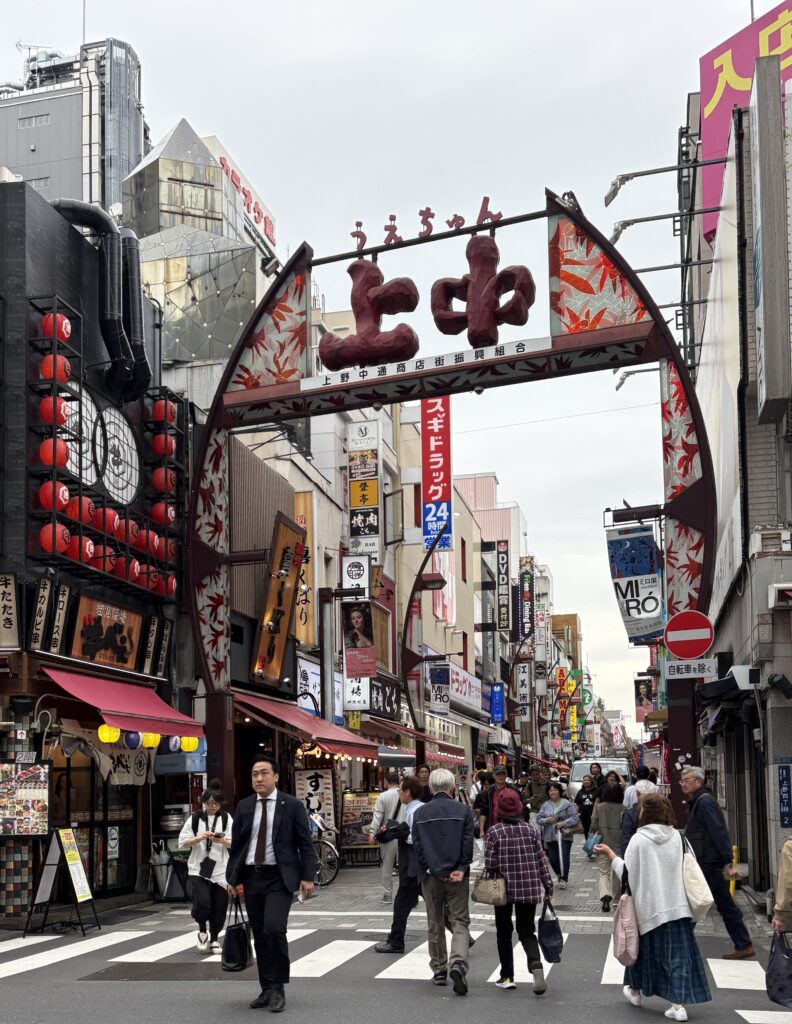
- Good for: Museum lovers, cultural explorers, families
- Vibe: Calm, traditional, educational
- Pros & Cons: Home to Ueno Park + museums; nightlife is subdued
Ueno is ideal for travelers craving culture, greenery, and a slower pace. It’s a calm counterpoint to Tokyo’s more chaotic districts.
Best known for Ueno Park, a vast green space and cherry blossom hotspot, it’s also a cultural center packed with museums, shrines, and even a zoo. This makes it a standout option for families and individuals seeking a peaceful and enriching experience.
The Tokyo National Museum, National Museum of Western Art, and Ueno Zoo are all clustered within the park, offering days of laid-back but engaging exploration. It’s easily the city’s most museum-dense area, especially suited for art and history lovers.
Just beyond the park lies Ameya-Yokocho, a postwar market street buzzing with life. Here, street food stalls, bargain shops, and the aroma of grilled yakitori create an old-school Tokyo atmosphere that’s hard to resist.
Ueno is also a smart logistical base. It’s on the JR Yamanote Line, making it easy to reach districts like Akihabara and Tokyo Station. Ueno Station is a major terminal for heading north, making it an ideal base for day trips to places like Nikko or for further exploration of the Tohoku region.
For accommodation, Ueno often gives you more space for your yen compared to trendier districts. It’s popular with travelers who want convenience without chaos. The atmosphere leans calm and residential, with a strong local feel.
What Ueno lacks is a vibrant nightlife. There are some izakayas, but don’t come here expecting wild nights or trendy cocktail bars. That said, it’s ideal for early risers, families, or those who prefer exploring during the day and winding down at night.
Ueno is also appealing for longer stays, especially if your travel style leans more toward walking, learning, and immersing yourself in local life. It may not be flashy, but it’s full of depth, and Tokyo wouldn’t be the same without it.
Top Hotels in Ueno
Mitsui Garden Hotel Ueno – Luxury
Hotel Graphy Nezu – Mid-Range
Ueno Touganeya Hotel – Budget
Harajuku
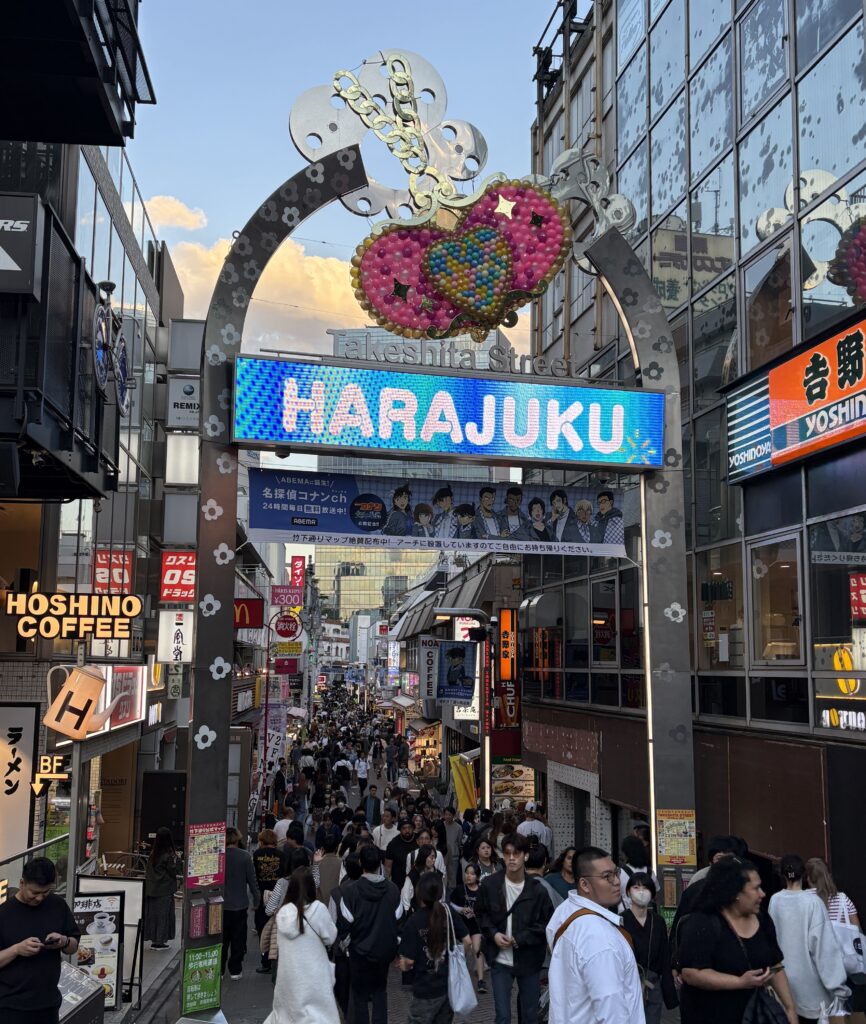
- Good for: Trendsetters, shoppers, people-watchers
- Vibe: Youthful, eccentric, fashionable
- Pros & Cons: Iconic shopping + street fashion; not ideal for peace and quiet
Harajuku is where Tokyo cranks up the creativity. This high-energy neighborhood feels like a walking fashion show, with every street offering themed cafés, eccentric shops, and style-savvy teens on the move.
Takeshita Street is the main artery, chaotic, colorful, and buzzing with novelty boutiques and crepe stands. But there’s more than meets the eye. Just a few blocks from the chaos, Meiji Shrine offers a peaceful counterbalance, surrounded by towering trees and quiet paths.
Nearby Yoyogi Park is a favorite for both locals and travelers looking to relax, picnic, or catch spontaneous performances. This blend of wild and serene is what makes Harajuku truly distinct.
Shopping options stretch from quirky to couture. Omotesando showcases luxury brands in modern buildings, while Cat Street boasts an indie edge, featuring vintage finds and boutique labels. It’s one of Tokyo’s best areas for style spotting.
Harajuku is also well-connected. You’ve got the JR Yamanote Line and two Tokyo Metro routes, and Shibuya is just a stroll away. It’s easy to base here and explore beyond.
What won’t you find? Quiet evenings. Harajuku can be overwhelming if you’re after rest. Hotels lean boutique or spill into neighboring districts. Dining is more daytime bites than after-dark lounges.
Still, if people-watching, playful fashion, and unexpected discoveries are your thing, Harajuku hits the mark. It’s Tokyo turned up loud, with just enough room to breathe.
Top Hotels in Harajuku
Trunk Hotel — Luxury
The Aoyama Grand Hotel — Mid Range
Dormy Inn Premium Shibuya Jingumae — Budget
Roppongi
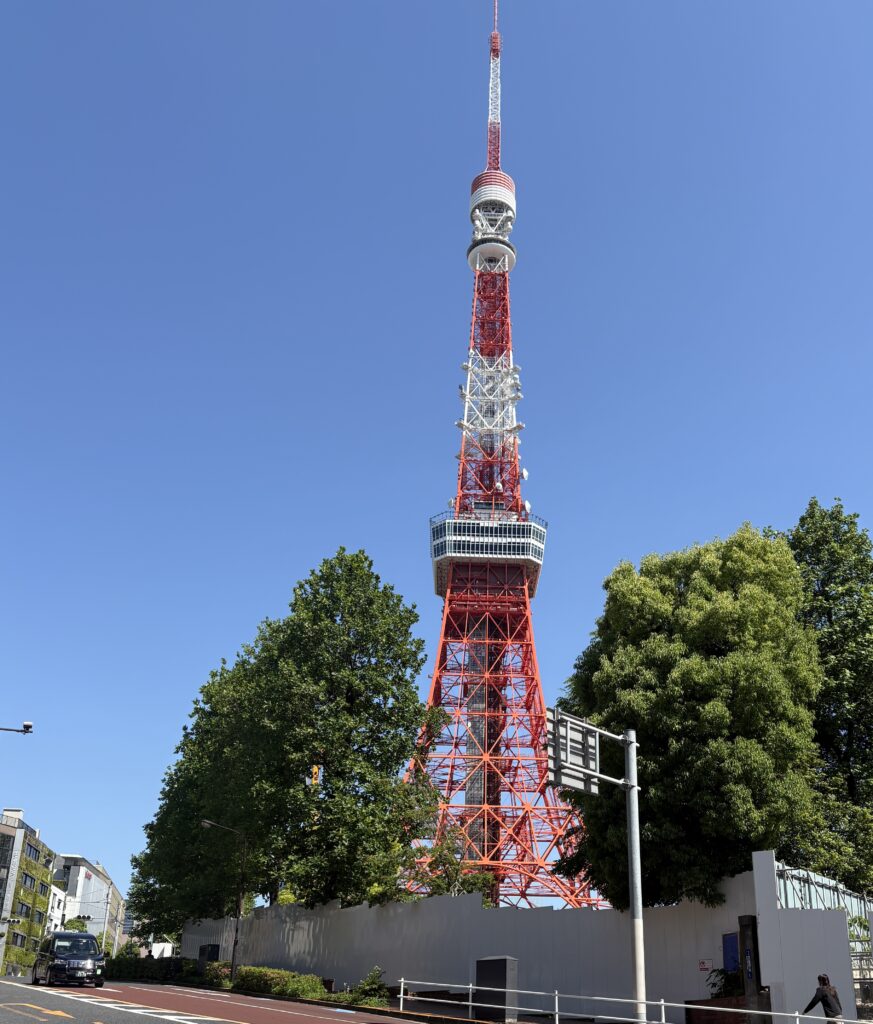
- Good for: Nightlife lovers, art buffs, upscale travelers
- Vibe: International, posh, lively
- Pros & Cons: Great nightlife + museums; can feel touristy and expensive
Roppongi is one of those rare Tokyo neighborhoods that blends nightlife, international energy, and highbrow culture into a single, vibrant district.
If your ideal trip includes rooftop cocktails, museum hopping, and late-night ramen, Roppongi will keep you entertained from morning to midnight.
It’s long been known as a hotspot for expats and night owls. Although that still holds true, the area has matured. These days, it’s not just about bars and clubs.
Developments like Roppongi Hills and Tokyo Midtown have added luxury hotels, upscale boutiques, and two of the city’s top contemporary art museums: the Mori Art Museum and the National Art Center Tokyo.
The nightlife here is diverse. You’ll encounter everyone from business travelers and stylish Tokyo locals to global tourists. English is widely spoken in restaurants and bars, making this one of the more accessible neighborhoods for international visitors.
Still, Roppongi isn’t everyone’s cup of tea. It can feel overly polished and a little too tailored to a Western crowd. Costs are higher across the board, and while the nightlife can be electric, it sometimes leans touristy or inconsistent.
That said, Roppongi scores big on convenience and versatility. It’s close to Tokyo Tower, well connected by subway lines, and loaded with dining, art, and entertainment options.
Whether you’re here to sip cocktails with a view or dive into Japan’s modern art scene, Roppongi delivers a dynamic, globally flavored experience.
Top Hotels in Roppongi
Grand Hyatt Tokyo — Luxury
Remm Roppongi — Mid Range
Candeo Hotels Tokyo Roppongi — Budget
Akihbara
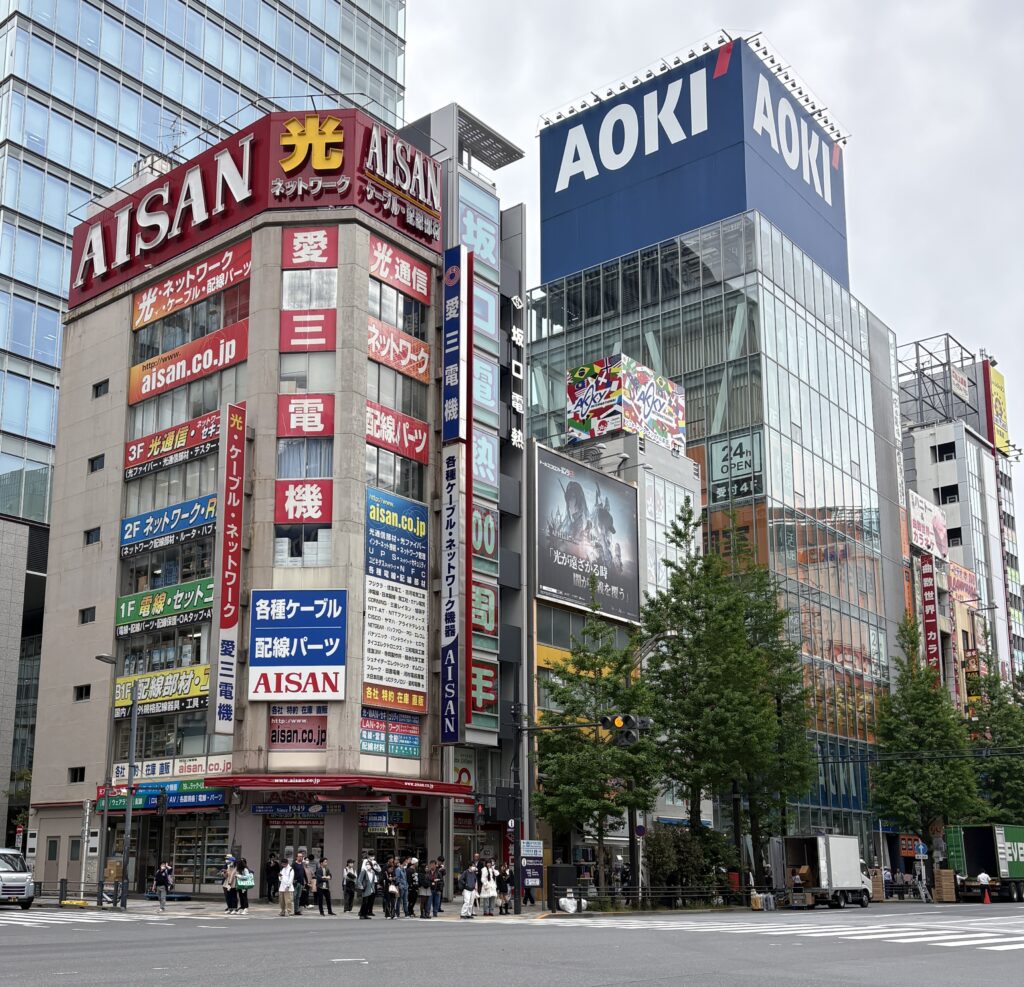
- Good for: Anime fans, gamers, tech lovers
- Vibe: Neon, niche, enthusiast-driven
- Pros & Cons: Paradise for otaku culture; may overwhelm those uninterested
Akihabara is Tokyo’s electric pulse for anime, gaming, and tech culture. If your idea of fun includes flipping through manga, battling it out in retro arcades, or hunting down rare figurines, this is your playground.
Known as “Electric Town,” it’s evolved from a post-war electronics market into the global epicenter of otaku culture.
The energy hits as soon as you exit the station. Giant billboards flash anime scenes, maid cafés line the sidewalks, and arcades light up with the sound of old-school video games. From camera gear at Yodobashi to vintage consoles at Super Potato, every corner reveals a new obsession.
However, it’s not all chaos; Akihabara is also extremely convenient. The station connects easily to other major neighborhoods, making it a solid base for those who enjoy fast-paced days.
That said, if you’re not into tech or anime, this area might feel like a sensory overload. It’s bold, loud, and not exactly peaceful. Still, even for the uninitiated, it’s worth the visit for sheer spectacle.
Food-wise, Akihabara delivers on quick bites and quirky cafés. Don’t expect scenic dining, but do expect theme-heavy spots that keep the fun going.
Hotels here are clean, compact, and designed with practicality in mind. If you’re after sleek designs and easy access to Tokyo’s subcultures, this is a smart and energetic choice.
Akihabara isn’t trying to please everyone, and that’s the appeal. For die-hard fans and curious visitors alike, it’s one of Tokyo’s most unforgettable experiences.
Top Hotels in Akihabara
Nohga Hotel — Luxury
Akihabara Washington Hotel — Mid Range
APA Hotel Akihabara Ekimae — Budget
Asakusa
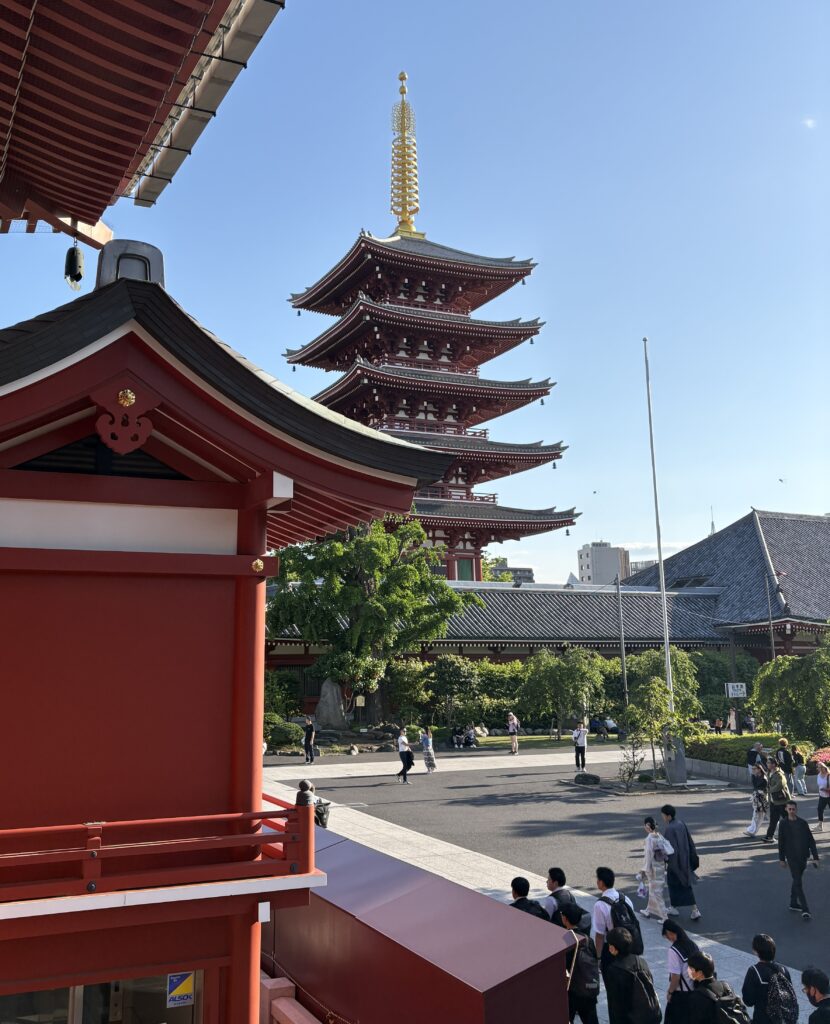
- Good for: History lovers, traditionalists, culture seekers
- Vibe: Old Tokyo, spiritual, grounded
- Pros & Cons: Historic sites + slower pace; limited nightlife and high-end amenities
Asakusa is where Tokyo slows down and shares stories from centuries past. It’s one of the few neighborhoods that still clings to its roots, offering a glimpse into Edo-period Japan without compromising its charm.
At the heart of Asakusa is Senso-ji, the city’s oldest and most famous temple. You’ll pass through the iconic Kaminarimon gate and stroll Nakamise Street, lined with stalls selling taiyaki, senbei, and traditional souvenirs. The vibe is lively, but never rushed—more about soaking in the atmosphere than dashing to your next stop.
Everything here feels like a deliberate escape from the city’s glass towers. Rickshaws rattle over stone-paved lanes.
Wooden facades and narrow alleyways lend the neighborhood a museum-like charm that still feels lived-in and authentic. It’s perfect for travelers drawn to Japan’s cultural depth without the touristy gloss.
Despite its traditional feel, Asakusa is not lacking in modern conveniences. The nearby Sumida River offers scenic boat rides toward Tokyo Bay and Odaiba, while Tokyo Skytree looms in the background, a sleek contrast to the historical streets.
That blend of old and new is what sets Asakusa apart, quiet and contemplative, but still within reach of the city’s energy.
Transportation is solid, with Asakusa Station linking to the Ginza and Asakusa Lines, making it easy to access places like Ueno, Shibuya, or even Narita Airport. While not as central as Tokyo Station or Shinjuku, you’re far from isolated.
Nightlife here is limited. If you’re chasing buzzy bars or trendy restaurants, look elsewhere. Dining sticks to tradition, soba, tempura, and cozy izakayas where locals unwind. It’s charming, but the after-dark scene is subdued.
Hotels tend to be boutique or family-run, adding to the area’s authenticity. You won’t find many high-end chains, but what you will get is intimacy and cultural immersion.
If your Tokyo dreams include temples, quiet walks, and stepping into the past, Asakusa delivers. It’s the cultural heart of the city and an ideal pick for travelers seeking something meaningful over flashy.
Top Hotels in Asakusa
The Gate Hotel Kaminarimon — Luxury
Asakusa View Hotel — Mid Range
Sakura Hostel Asakusa — Budget
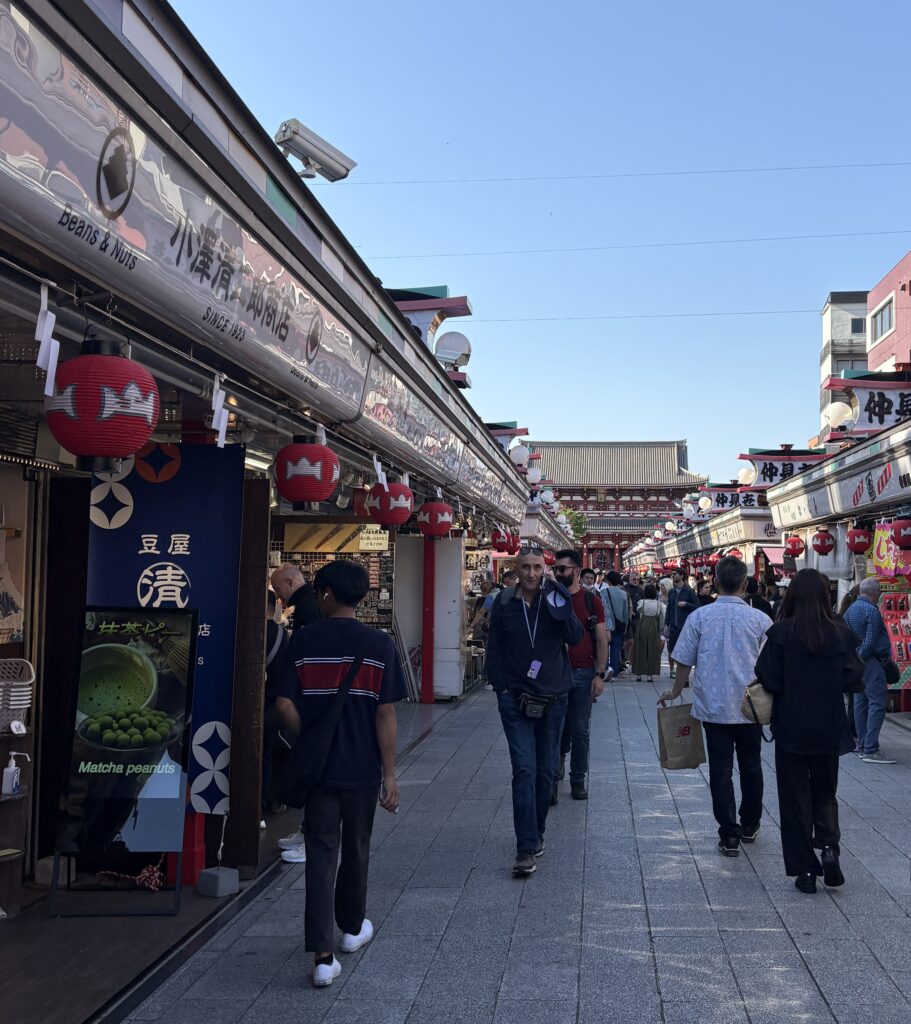
How to Get Around Tokyo
Tokyo’s transportation system is efficient, complex, and surprisingly easy to get the hang of once you’ve spent a little time with it, and yes, Google Maps is your lifeline.
I’ll be honest, I was intimidated at first. The subway map looks like spaghetti, and transferring lines can feel like a mini workout.
But after a day or two, it clicks. Trains arrive every 3 to 6 minutes, everything runs on time, and suddenly, it all feels very practical.
Tokyo is incredibly well-connected, so no matter which area you stay in, you’ll have easy access to the city’s top sights. The subway and train systems are highly efficient and widely available.
- Subway: The Tokyo Metro and Toei lines cover most of the city and get you where you need to go fast. It’s your bread and butter for navigating Tokyo
- Suica/PASMO Cards: Tap-and-go IC cards that work across trains, subways, buses, and even vending machines. You can buy a physical card at any major station or airport kiosk, or download it straight to your phone and use Apple Wallet or Google Wallet
- JR Trains: Great for accessing areas just outside of central Tokyo and for longer rides. Some lines, like the Chuo Line zip you across the city quickly
- Google Maps: Use it religiously. It tells you platform numbers, train timings, and even which car door to board for faster exits
- Taxis: Comfortable and reliable, but the cost adds up. They’re best for early mornings, late nights, or if you’re hauling bags
- Walking: Once you’re in a neighborhood, walk it. Tokyo is one of the world’s most walkable big cities, and there’s no shortage of things to stumble upon
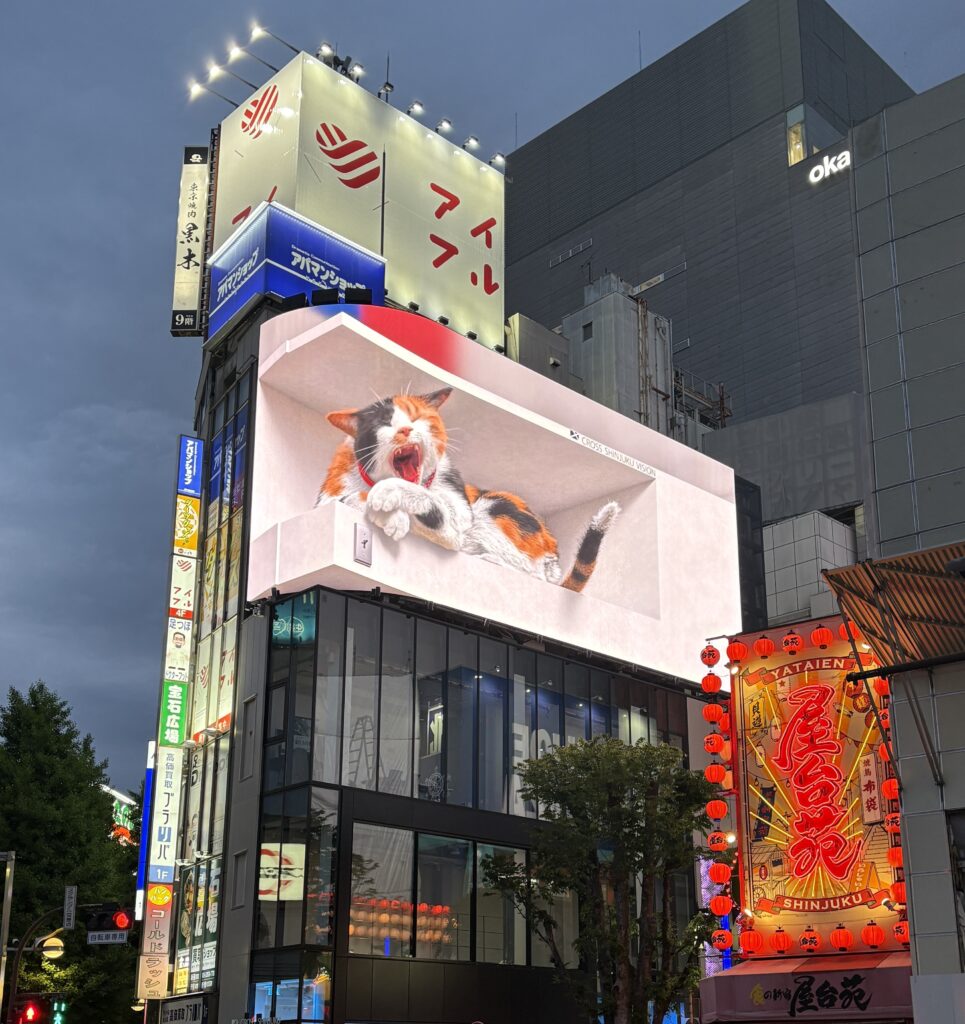
What is the Best Area to Stay in Tokyo?
Tokyo is a city of endless contrasts, ancient temples tucked between sleek skyscrapers, quiet alleyways right next to neon-lit arcades, and serene gardens just a short stroll from high-speed rail stations.
These juxtapositions are part of what makes planning a solid Tokyo itinerary so essential; you want to hit the right balance.
With each neighborhood offering its own unique flavor, choosing where to stay can be a tough decision.
But here’s the key: it really comes down to your travel style. If you’re all about energy, entertainment, and nightlife, Shibuya or Shinjuku are the places to be. Prefer something more traditional or low-key?
Asakusa and Ueno offer that old-school Tokyo charm. Craving modern comforts with easy access to transportation hubs? Shinagawa checks all the boxes.
Looking for boutique shops, trendsetters, and a stylish atmosphere? Harajuku or Ginza is calling your name.
The good news? There’s no wrong choice. Thanks to Tokyo’s incredibly well-connected transportation system, getting from one district to another is quick and efficient. So even if you stay in one area, exploring the others is just a train ride away.
Pick the neighborhood that matches your vibe, but don’t overthink it. Tokyo makes it easy to experience it all. And wherever you choose to base yourself, it’s worth brushing up on a few tourist mistakes to avoid in Japan so you can explore each district with confidence and respect.
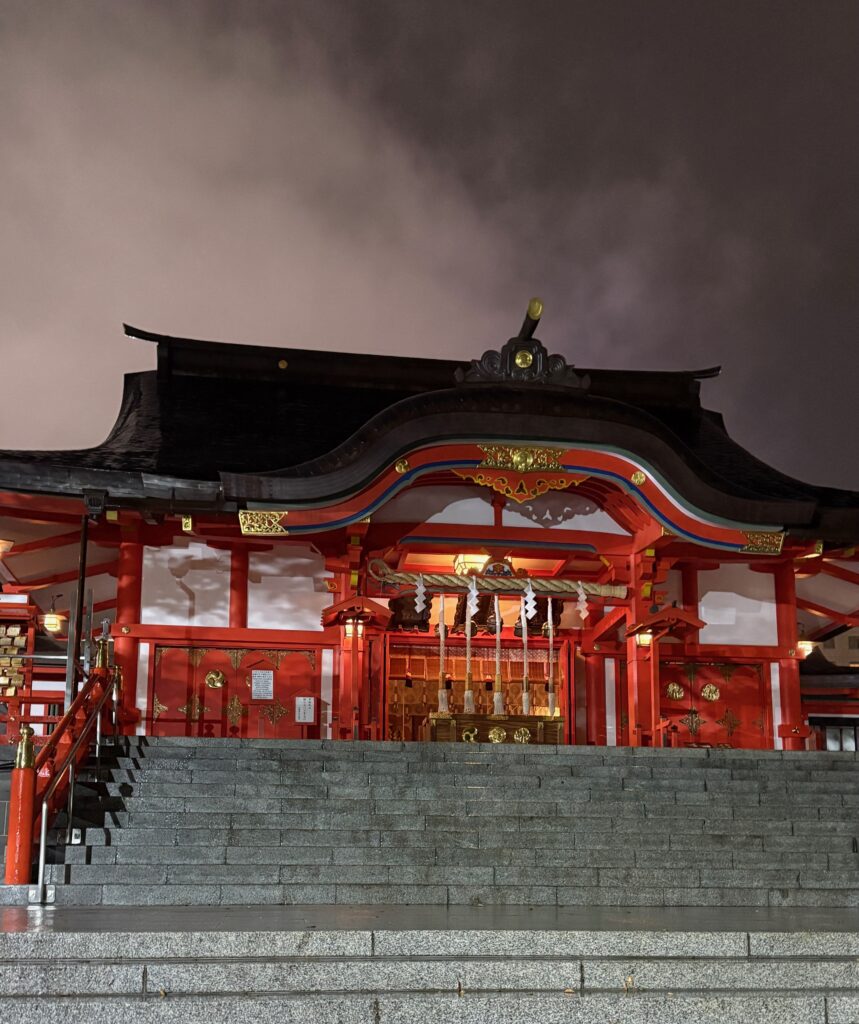
How many nights should I stay in Tokyo?
Which area is best to stay in Tokyo for first-time visitors?
Shibuya and Shinjuku consistently top recommendations for first-timers thanks to their energy, convenience, and endless movement.
Both are located on the JR Yamanote loop, providing easy access to other major zones. Travelers who prioritize cultural sites might prefer Asakusa or Ueno instead.
Is it better to stay near Tokyo Station or in a lively neighborhood like Shibuya?
Tokyo Station is great for bullet trains and convenience, but it feels quiet at night. Shibuya offers more nightlife and energy, though it can be noisier.
Is Tokyo safe for solo travelers at night?
Absolutely, Tokyo is one of the world’s safest cities, even late at night. Just stay alert in party zones like Kabukicho, Shinjuku, and stick to well-lit streets. Taxis are also reliable if you’re out late.

